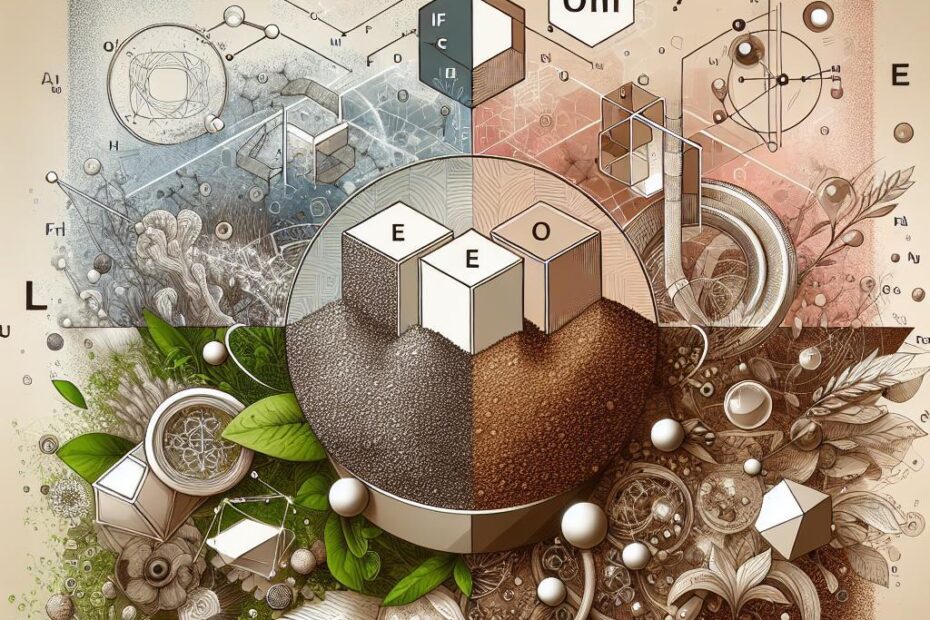When it comes to understanding the composition of soil, there is often confusion about whether it is an element, compound, or mixture. In order to clarify this topic, we need to delve into the intricate makeup of soil and explore its various components.
What is Soil?
Soil is a complex mixture of minerals, organic matter, water, air, and living organisms. It is a crucial component of the Earth’s ecosystem, as it provides the necessary nutrients for plants to grow and thrive. Soil plays a vital role in sustaining life on our planet and is essential for agriculture, forestry, and natural habitats.
Is Soil an Element?
An element is a substance that cannot be broken down into simpler substances by chemical means. Soil does contain elements such as oxygen, carbon, hydrogen, nitrogen, phosphorus, potassium, and many others that are essential for plant growth. However, soil itself is not considered an element because it is a combination of different substances.
Is Soil a Compound?
A compound is a substance composed of two or more elements chemically combined in a fixed ratio. While soil does contain compounds such as minerals, organic matter, and water, it is not considered a compound in the traditional sense. Soil is a heterogeneous mixture of various substances rather than a single compound.
A mixture is a combination of two or more substances that are physically mixed together but not chemically bonded. Soil fits the definition of a mixture, as it is composed of different components that retain their individual properties. These components include minerals, organic matter, water, air, and living organisms.
Components of Soil:
-
Minerals: Soil minerals are inorganic compounds that provide nutrients for plants. They include substances such as sand, silt, clay, and various minerals like quartz, feldspar, and mica.
-
Organic Matter: Organic matter in soil comes from the decomposition of plant and animal material. It is rich in nutrients and helps improve soil structure and fertility.
-
Water: Soil water is essential for plant growth and nutrient absorption. It also helps transport nutrients and provides a habitat for soil organisms.
-
Air: Soil air is necessary for the respiration of plant roots and soil organisms. It helps maintain proper soil structure and drainage.
-
Living Organisms: Soil is teeming with microscopic organisms such as bacteria, fungi, nematodes, and earthworms. These organisms play a vital role in nutrient cycling and soil health.
Benefits of Soil:
-
Nutrient Availability: Soil provides essential nutrients for plant growth, including nitrogen, phosphorus, potassium, and micronutrients.
-
Water Retention: Soil acts as a reservoir for water, ensuring that plants have an adequate water supply for growth and development.
-
Soil Structure: Soil structure affects drainage, aeration, and root growth. Proper soil structure is essential for healthy plant growth.
-
Biodiversity: Soil supports a diverse range of microorganisms and invertebrates that contribute to nutrient cycling and ecosystem functions.
Practical Tips for Soil Management:
-
Soil Testing: Conduct regular soil tests to determine nutrient levels and pH. Adjust soil fertility as needed to optimize plant growth.
-
Organic Matter: Add compost, manure, or cover crops to increase soil organic matter and improve soil structure.
-
Mulching: Use mulch to conserve soil moisture, suppress weeds, and improve soil temperature regulation.
-
Crop Rotation: Rotate crops to prevent soil depletion and nutrient imbalances. Different plants have varying nutrient requirements, which can help maintain soil fertility.
In conclusion, soil is a complex mixture of minerals, organic matter, water, air, and living organisms that provide the necessary nutrients for plant growth. While soil contains elements and compounds, it is best classified as a heterogeneous mixture due to its diverse components. Understanding the composition of soil is essential for sustainable agriculture and ecosystem health. By implementing proper soil management practices, we can ensure the long-term fertility and productivity of our soils for future generations.
